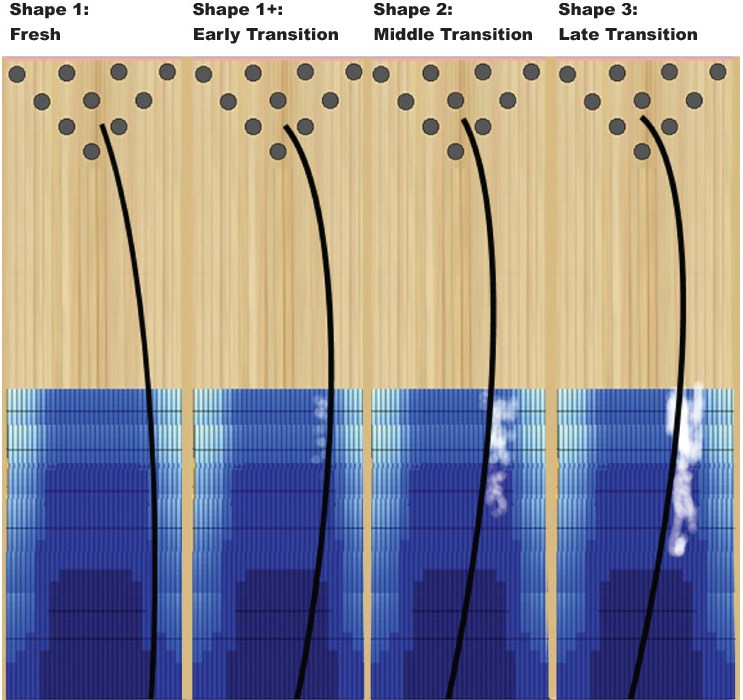Approaching the Advanced Mechanics
By Staff Writer Tim Gagne
Last time I went over the basics of the approach and lining up your shot; today I will be going over the more advanced mechanics involved before you hit the line. As bowlers develop a hook on the lanes, they start requiring some much more important mechanics to keep a consistent shot. These can range from learning transitions, to matching up the pattern, to throwing the ball repeatedly in the pocket. When it comes to putting up the best score each game, the only things you can truly control exist behind the foul line.
Attack Plans
Before each shot, you should have some plan of “attack”. You should have a starting place on the approach, a target board on the lane, a breakpoint somewhere downlane, and have an idea of the speed you want and the amount of hand you are putting in the ball. Figuring each of these things out is a learning experience. It takes time to determine when you need to slow down, or move left, or adjust your target right, or project the ball further. As always, the best time for this is during practice sessions.
One of the best things you can do for yourself in a practice session is to try everything. Look at every ball you have, play everywhere on the lane, and look to hit your marks and target spots. Don’t focus on the result so much as the execution. If you throw no strikes the entire time but never threw a bad ball, you should reward yourself still. Practice is not about the score.
Lining Up in Transition

On your typical house shot, most bowlers have a go-to line. They usually will open up with a great first game if they are throwing well and then they will start to fall off towards the end of the game or beginning of game two. This is the transition in action. As a bowling ball rolls down the lane, it picks up oil until it hits the dry part of the lane, then it will lay down a bit of oil until it grabs the lane to hook. This causes the pattern to take shape and creates hook spots in some places and skid in others. The key during this transition is to make the proper adjustments that will line you back up. For the most part, you will move in the direction of your off-ball hand. This is generally due to the hook spot wearing too much and the ball beginning to overhook.
Once you are at the point that you are overhooking and need to move a bit, while you are only moving a board or two at a time, you need to remember to stay consistent with your line. Your break point should be staying the same on the small board movements, but sometimes you will need to “redraw” your target line so you are looking at the correct board for targeting. You also may need to open up your shoulders just a tiny bit to allow your swing to stay in line with your ball path. Imagine a string tied from your ball side shoulder, to your target, to your break point. You want the string to be straight or in a continuous curve, not weaving left or right to try to get to the next point.
Wrap Up
Going through the advanced measures of transition is an endless topic. There are so many options to choose from in making a good adjustment. Focus on practice and finding the ones that work with you and for you.
Next time I’ll be approaching (pun intended) the topic of the mental side of bowling.
Until then, good luck and bowl well!






Oil will move down the lane more with a Urethane ball compared to a reactive ball.
As the lane transitions you will need to change what arrow you are targeting. So if you are right handed you would move your target to the left as the lane transitions
Wow ! This explains real well on lane conditions.
Do the oil moves further down the lane with different kind of balls ?
Do I keep the same arrow for targeting through the transition of the lanes ?
Thank you for the great explanation !
Leave a comment